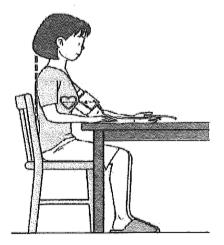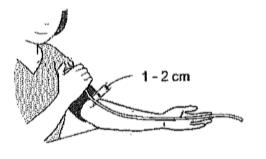Home Blood Pressure Sheet Excel
Did you know… Blood pressure monitors are available to buy from pharmacies or online, are usually a reasonable price and handy if you have been diagnosed with hypertension (high blood pressure) and need to keep a regular check. Also blood pressure monitors are available on short loan from the surgery with a refundable £20 deposit (cash or cheque only) – although there is a limited supply. Usually available for a week in order to take 7 days’ readings they come complete with a recording sheet and guidance on how to take your blood pressure which is also replicated here for your information. Further down this page you can also find more information about your blood pressure.
Taking your Blood Pressure
You may find this short video from the British Heart Foundation useful
How to choose a monitor and take a blood pressure measurement
Applying the Arm Cuff
Try to use the same arm each time. Remove tight clothing or roll up your sleeve.
Wrap the cuff firmly round your upper arm & secure with the Velcro fastener.
The bottom edge should be 1-2cm above your elbow, with the tube on the inside of your arm, pointing downwards & in line with your middle finger.
How to Sit Correctly
To take a measurement, you need to be relaxed & comfortably seated, under comfortable room temperature. Avoid bathing, drinking alcohol or caffeine, smoking, exercising or eating 30 minutes before taking a measurement.
- Sit on a chair with your feet flat on the floor
- Sit upright with your back straight
- Sit with your back & arm supported
- The cuff should be on your arm at the same level as your heart
Taking a Measurement
Press the Start/Stop button. The arm cuff will start to inflate automatically.
Press the Start/Stop button to turn the monitor off, & wait 2-3 minutes before taking another measurement.
Record your readings on the form above.
Take two measurements in the morning and two in the evening for a week. The pulse rate is not required for this form but if you are concerned about your pulse rate then please include it in the margin.
You can either record it on the pdf form or download the Excel form found using the links at the top of this page. The average is then calculated automatically on the Excel form but we will calculate the average on the pdf form once received.
Please send the form either by post to Towcester Medical Centre, hand it in at Reception or you can email it via [email protected]. (Please include your name or NHS number if known and date of birth in order that we can find the correct record).
About your blood pressure
Your blood pressure is the pressure of blood in your blood vessels or arteries. When a doctor or a nurse measures your blood pressure they record two separate figures. For example, 150/95 mm Hg – which is said as 150 over 95.
- The top number is the systolic pressure. This shows the pressure in the arteries when the heart contracts.
- The bottom number is the diastolic pressure. This shows the pressure in the arteries when the heart rests between each heartbeat.
High blood pressure also known as hypertension can increase the chance of developing heart disease, a stroke, and other serious conditions. Generally, the higher the blood pressure, the greater the risk.
High blood pressure can be brought down by improving lifestyle risk factors. For example, if you are overweight, losing weight can help. Regular physical activity, a healthy diet, cutting back if you drink a lot of alcohol, stopping smoking, and a lowering salt and caffeine intake can all help bring down high blood pressure. A doctor can also prescribe medication that can can help to lower blood pressure if they feel it is a suitable option.
For more information about Blood Pressure please see bloodpressureuk.org/BloodPressureandyou/Homemonitoring


